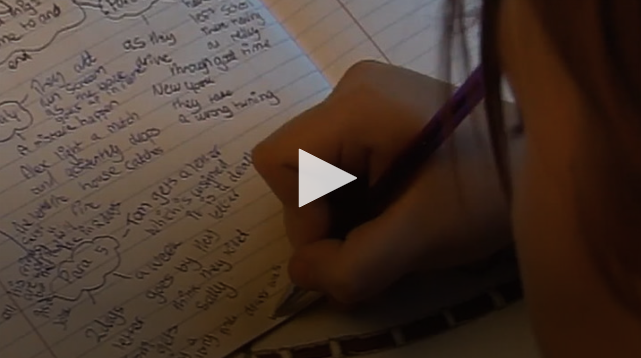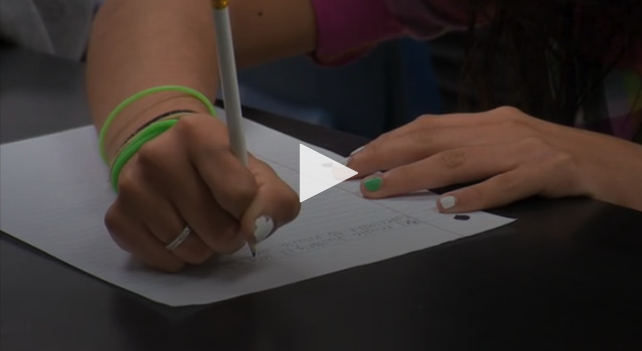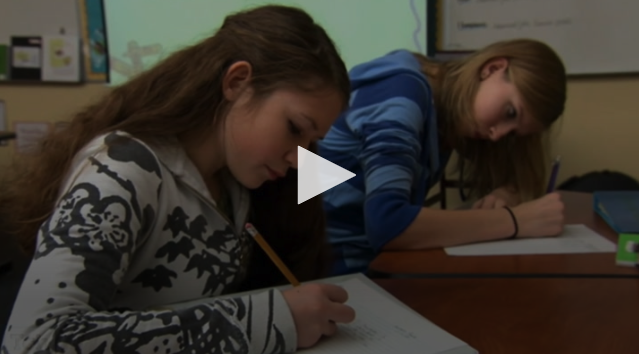This blog post is a hypothesis. I haven’t tried this in my classroom. I don’t know for sure that it will work, but I’m hopeful that I’ve stumbled onto something really cool.
It was one of those flights: wifi was out, my Chromebook wouldn’t turn on, the seat belt fasten sign stayed illuminated the entire flight, there was no beverage service. I had nothing to do but listen to music and stare into space. It’s important to note that I wasn’t trying to be intrusive (and hope I wasn’t), but what I saw next caught my attention and held it for the roughly 90-minute flight — the person one seat up and across the aisle was writing a blog post.
At first I tried to just take a peek at what she was writing, but the more I watched, the more engaged I became. Watching her type, delete, revise, copy and paste, reorganize, move from document to document — it all captured my teaching (and writing) brain in ways I hadn’t experienced before. And that’s when it hit me.
I was learning so much more about this woman’s process, her writing strengths and weaknesses, by actually watching her than I’ve ever learned about my own students by giving feedback on drafts and final versions after the fact.
Here is my hypothesis: Watching my students in the process of writing will help me be a better writing teacher because I’ll learn how to be the writing teacher they need right now. If I can spend five to ten minutes watching each of my students write (which is easy with Google Docs), I’ll have more insight into their strengths and challenges, more data to help me differentiate mini lessons , and more ability to help them improve than I would have otherwise.
What I Learned by Watching This Woman Write
Most of the time, she struggled with precision, not ideas. Of course this will be different for each student, but watching her type, it became very clear that she knew exactly what she wanted to say. Her ideas weren’t the issue; however, she struggled with the precise words that would capture and communicate her thoughts. Almost every other sentence she wrote, she deleted something or did some tinkering. For many sentences, even once she had the “right” words, she would revisit and revise them later on. Not once did the concepts within each of these sentences change, but the linguistic choices and syntactic delivery were changed often.
- If this were one of my students and I had this observation, I’d work with her on sentence structure; we’d talk about use of compound sentences; and I’d ask her NOT to delete all her different iterations, but instead keep them as a record of all the different ways this idea could come forth in her writing.

VIDEO: A Student’s Perspective on the Writing Process
When the woman on the plane did struggle with ideas, she was paralyzed. There were stretches of time (10-15 minute periods) where she just stared at her blank screen and blinking cursor. Of course, this could just mean that she needed a break, but in watching her body language, she was still very focused and engaged. She was just paralyzed by an inability to generate the ideas or concepts she needed.
-
Knowing this about a student would be very helpful, and my intervention would be to have them set the computer aside and just talk to me. As people, we tend to be able to generate ideas better when we just talk it through and have someone asking us good probing questions. That’s what I would’ve done to help this writer or any of my students who I can see struggling with ideas.

VIDEO: Writing to Learn
She had a lot going on with her computer. This woman was working from three or four different documents, copying and pasting back and forth, and was also on a few different Excel spreadsheets. Each time she went back and forth, she seemed to get a bit lost on whatever point she was trying to make, and she would take extra time working to recapitulate her focus and momentum.
-
This taught me a lot about the importance of brainstorming and planning with students (even if just a little bit) before diving into the drafting process. Think about it like this: our students usually have multiple documents to consult when writing — assignment sheets, rubrics, models, primary sources, and more — so if they haven’t spent the time to put together a loose plan of attack before they begin drafting, they will not only waste time during the process, but they could end up getting lost in all the materials.

VIDEO: Moving Beyond Brainstorming
Writing is a struggle. Anyone who engages in writing on a regular basis knows this to be true. However, watching what by all accounts was an experienced blogger write, was a visual reminder that writing is hard. It encompasses such a wide range of skills: analysis, synthesis, linguistic control, grammatical control, creativity, and much more. Any task with that many skills required is going to be difficult, and no matter how often one practices the art, it will remain difficult.
-
As teachers, we must embrace this struggle with our students by letting them watch us write, too. If I was able to gain so much insight into this random woman on a plane by watching her write, imagine how much our students could gain by watching us write.
Again, this is all, as of yet, an untested hypothesis. But I feel confident that this approach to data collection in the writing process will not only help me become a better writing teacher, but it will also empower my students to take ownership and pride in their writing in new and exciting ways. I plan to try it out this year, and I invite you to do the same.
As you think about your writing instruction this year, think about finding time to watch your students write; it might be as close as we can get to truly peeking inside their minds during the process.
How do you observe the writing process in your classroom?







